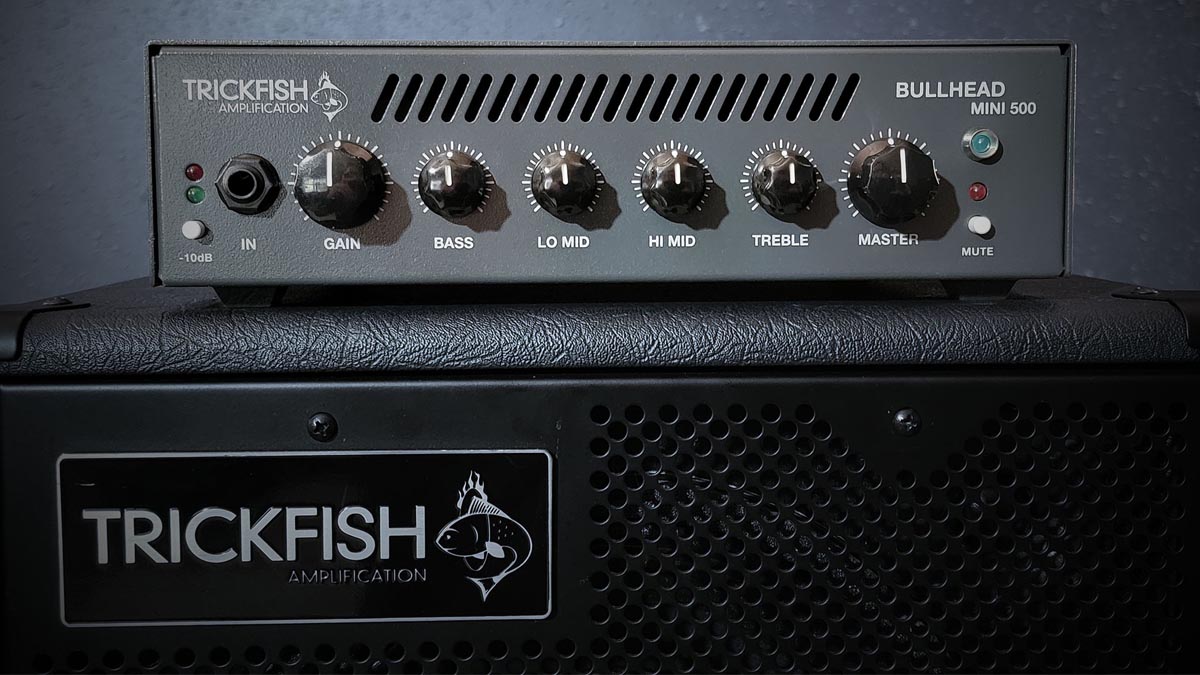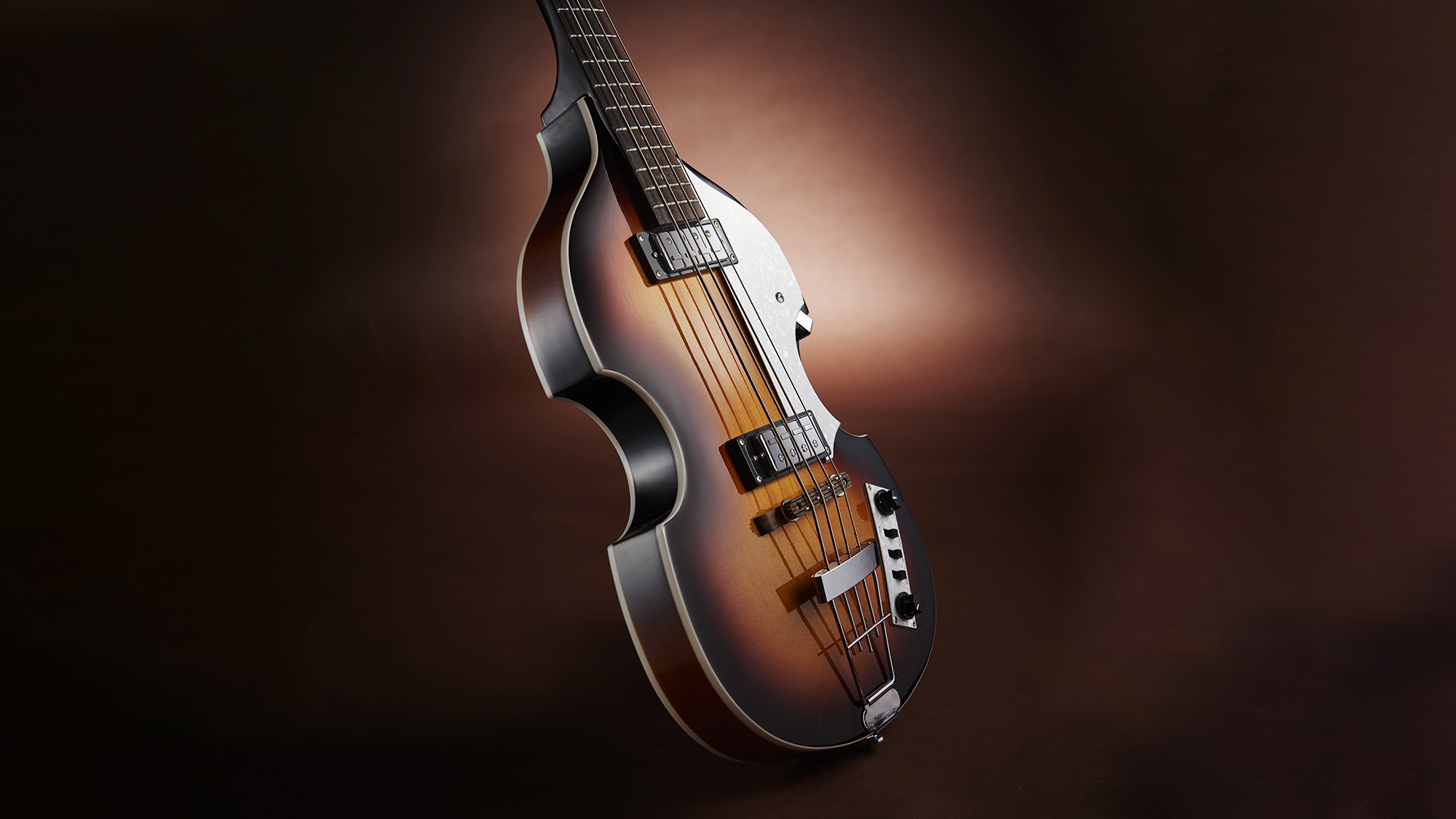Guitar World Verdict
A remarkably clean, powerful and well designed amp for its size, and a wonderful addition to the world of pro-level compact speaker cabs.
Pros
- +
Transparent.
- +
Lightweight.
- +
Well thought-out EQ.
- +
Cab is compact, robust, with amazing clear high-end.
Cons
- -
Fixed frequency mid controls aren’t for everyone.
- -
Cab is a tad light on the deep low-end.
You can trust Guitar World
Trickfish have now been around for almost a decade, making highly regarded heads and cabinets as well as preamps, and have built up an impressive list of pro players who swear by their range.
The Bullhead Mini 500 and Mini 112 are the newest additions to their line. Let’s see if they live up to the reputation of their larger, more powerful siblings.
Bullhead Mini 500
The Mini 500 is instantly recognisable as a Trickfish amp. The same in-line six-knob layout as the larger bass amp heads is present, and it sports the same Mike Pope-designed four-band preamp. Gone are the frequency selector switches for the EQ bands, but otherwise it’s what we’ve come to expect from Trickfish, balancing the versatility of two bands of mid control with the ease of use of a simple cut and boost EQ section.
The headphone socket and line-in have been moved to the back panel, part of a series of adjustments that have made the Mini 500 significantly smaller and lighter than previous Trickfish units. The front panel is rounded out by a -10dB pad switch for hotter signals, and a mute switch. It’s clean and simple without lacking any essential features.
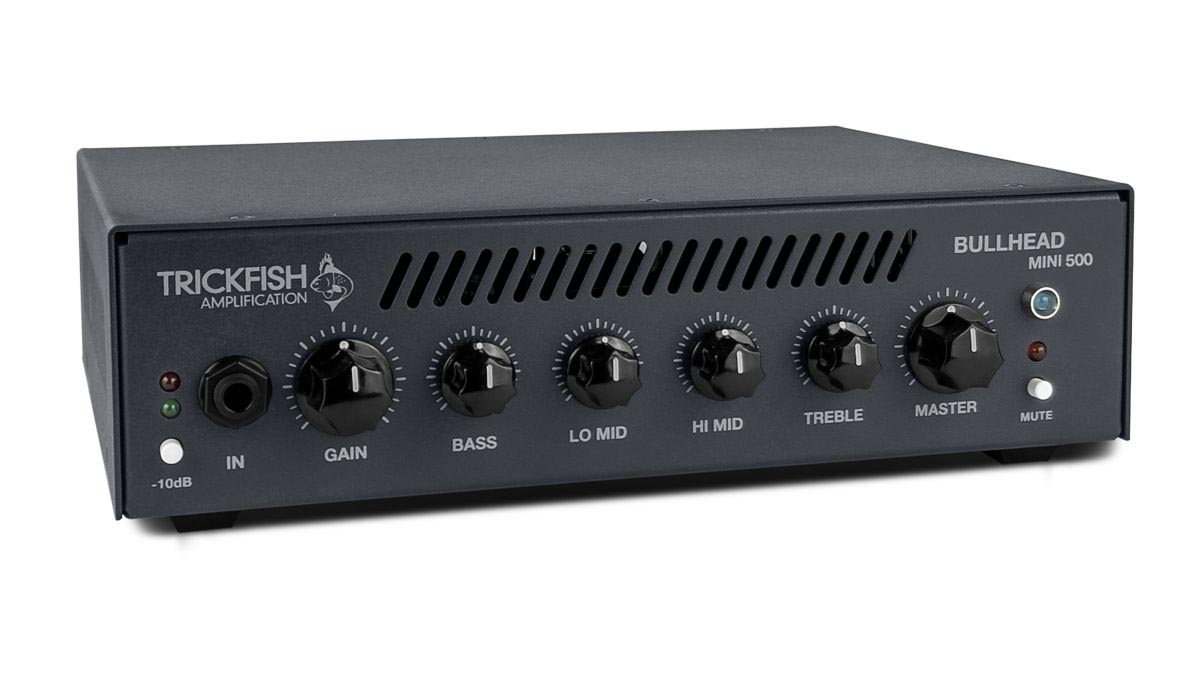
On the back we have a DI out with ground lift and pre/post EQ selector, a combined jack/Speakon speaker out and an effects loop that’s placed handily before the level indicator, so any pedals can be factored into setting the optimum input signal. No surprises, but nothing missing.
So what does it sound like? The first thing you notice is how usable every EQ band is across its whole range. The treble, set at 8Khz, adds air and sparkle without a hint of brittleness. This is particularly striking on slap sounds where the pops are way more present but not significantly louder than with the treble down. The bass control, at 80hz, offers fullness and body rather than mud.
It really feels like a lot of time has been taken to get the Q (the width/slope of the EQ) right, so there are no surprising or disrupting edges to the sound when you cut or boost particular frequencies. The fixed frequency mid controls are broad enough to be highly usable in shaping your tone, or controlling how present your bass is in a mix without the sensation that the center frequency is off.
All the latest guitar news, interviews, lessons, reviews, deals and more, direct to your inbox!
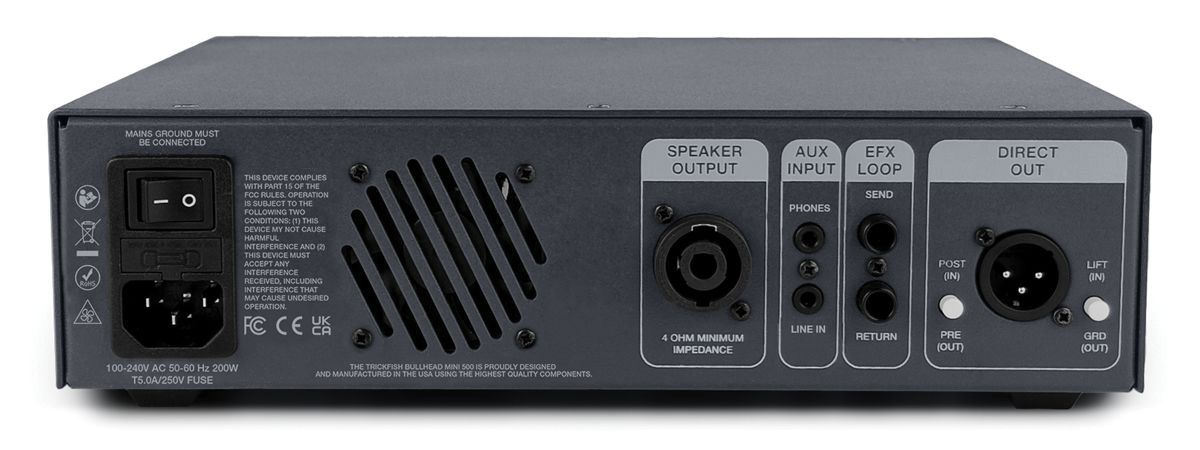
However, the striking thing about the Mini 500 is how responsive it is to everything across the frequency spectrum, so if you wanted more EQ, adding one as a pedal works wonders. Both the superpower of the Trickfish sound, and potentially the thing that would make some players look elsewhere, is that it is incredibly transparent.
It’s as close to a ‘Full Range’ bass amp as I’ve come across. Even the gain control adds no noticeable harmonic enhancement: It just sets the level of the input signal, making it perfect for amplifying sounds that you’ve developed with pedals or an FX unit elsewhere.
For pedalboard junkies, the Bullhead Mini 500 is a godsend. It also has the quietest fan I’ve ever encountered on a bass amp, making it perfect for low level at-home playing and recording. Nowhere is this transparency more apparent than when pairing it with the Mini 112...
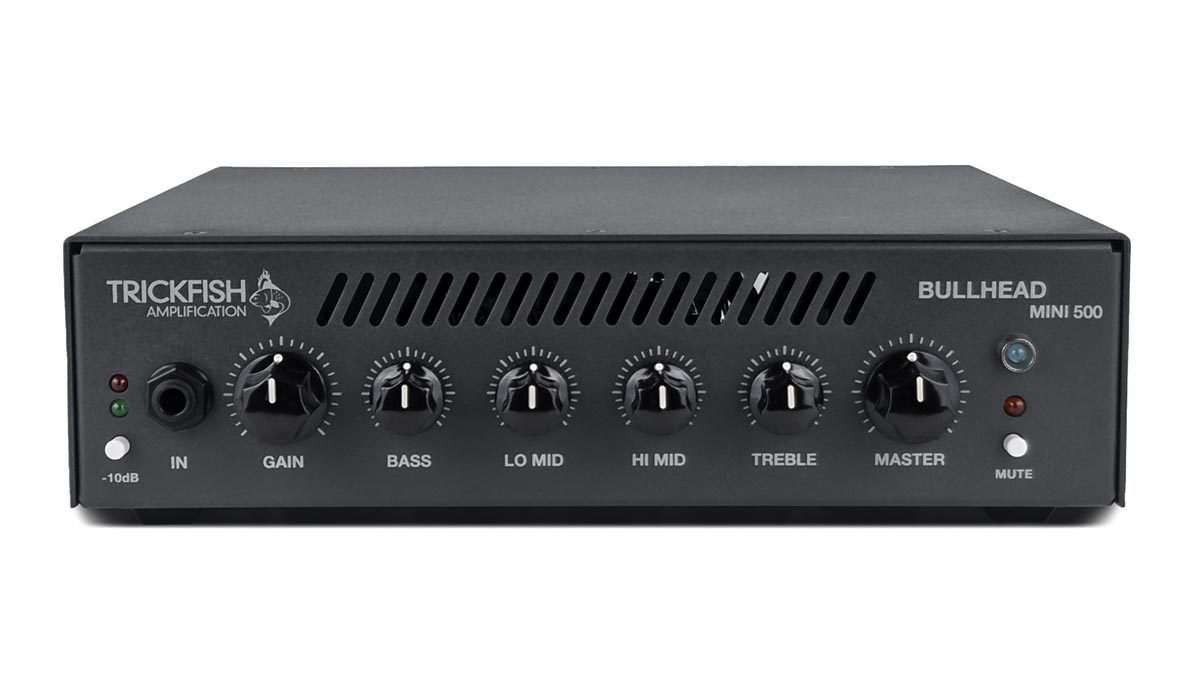
Mini 112
Trickfish’s speaker range already includes a 112 cabinet, so the addition of the Mini 112 invites a bunch of questions, including ‘Why add a second one?’ Well, as the name suggests, it’s significantly narrower, width-wise, by approximately four inches, and consequently lighter.
It’s one of the most compact 1x12 cabinets I’ve ever tried, although not the lightest: The birch construction and metal handles and corners leave it feeling robust, and therefore able to handle some volume without rattling off the edge of the stage.
The back panel for the 8-ohm cabinet is simple, with a level control for the tweeter and two combi jack/Speakon connectors. The tweeter control is an attenuator, so fully up is just ‘on’ and anything else reduces the level. This would be useful for a more muted, vintage tone, but in most situations leaving it wide open makes the most sense.
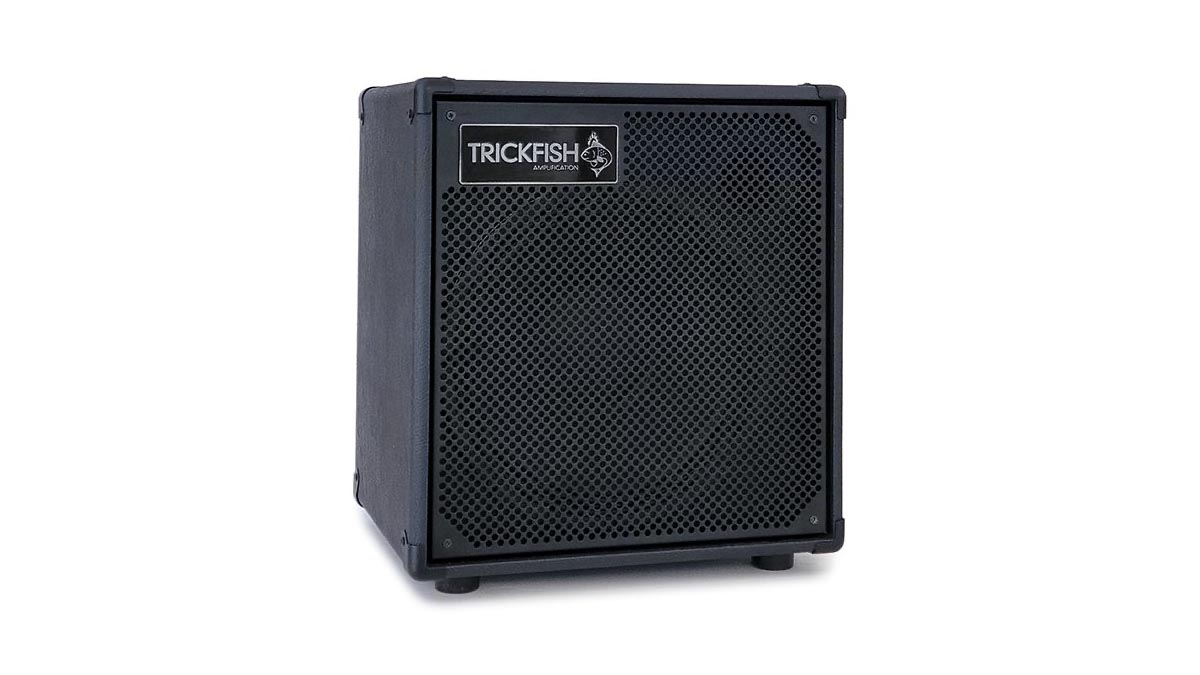
With everything set flat on the head, the notched zero positions on the EQ knobs making this particularly easy, the cab sounds present across the frequency spectrum with a slight mid boost, but no significant tonal bias either way. If you’re used to a more hyped low end, you’ll be reaching for the bass control on the head straight away.
Thankfully the amp is more than capable of dealing with a ton of low end. While the ‘flat’ sound is more balanced, it’s quite possible to get a dub-heavy tone at the kind of volume you’d expect from a 1x12 cab.
This setup isn’t designed to keep up with a drummer in a metal band and definitely isn’t the best choice if you spend most of your time playing a five-string in drop-A. For situations where portability is a must and the volume requirements are more modest, though, such as rehearsals, recording sessions and folk or jazz gigs – especially paired with a second cabinet – it’s ideal.
What makes it such a perfect match for the Mini 500 head is the transparency: Its ability to amplify anything across the frequency spectrum. There’s none of the harshness that often comes with tweeters in bass cabs when you run a lot of treble into them, and none of the woolliness that can plague larger cabinets.
With the bass boosted on the amp just a fraction, every nuance of my sound is apparent – whether it’s just a passive bass plugged straight in, or a full suite of pedals and effects running multiple loops and layers.
Every aspect of the EQ in an active bass is pleasingly replicated in glorious detail. The slight mid-boost noted earlier can be easily compensated for with the on-board EQ, but in a live situation it can really help a bass sound shaped in isolation actually carry all the way to the audience.
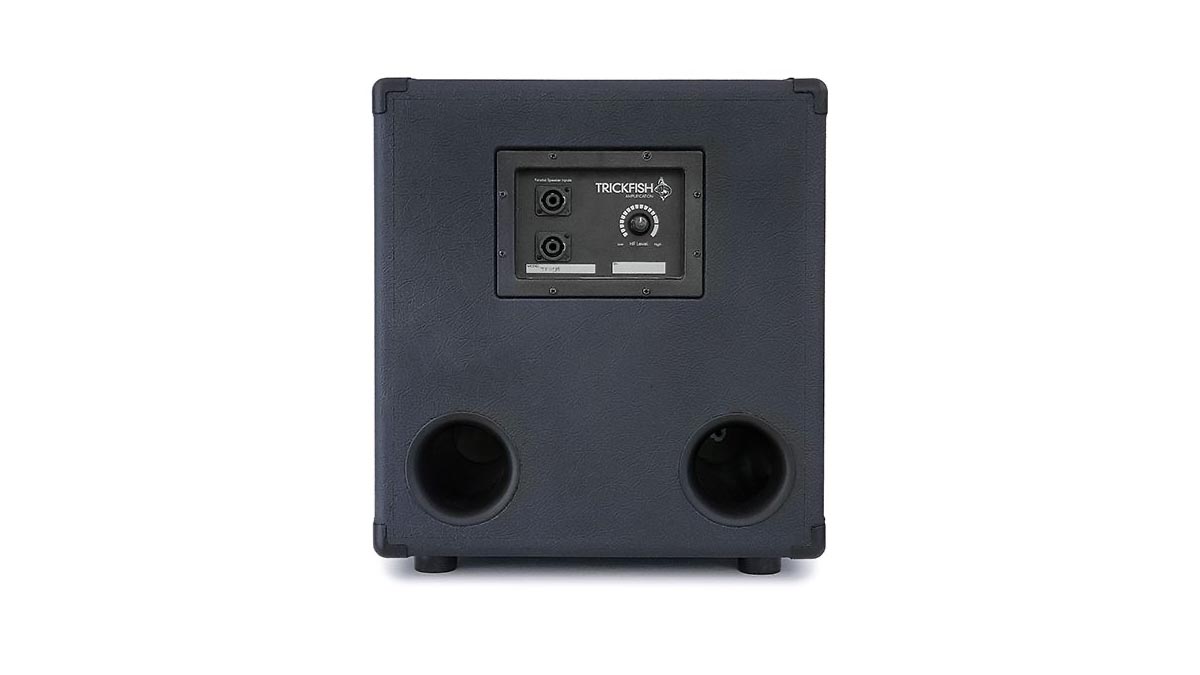
Back in the ’90s, one American boutique builder used the slogan ‘the sound in your head is in this bass’, and while that may or may not have been entirely true, it’s certainly the case that the sound of your bass is in this amp. The Trickfish Mini 500 and Mini 112 do a sterling job of faithfully reproducing whatever you throw at it.
If you’re looking for an amp with a signature sound of its own, you may be disappointed, but for clarity and versatility when handling a huge range of effected or clean bass tones, it’s tough to beat.
Specs
Mini 500 Amp
- PRICE: $799
- MADE IN: USA
- POWER OUTPUT: (4 ohms) 500W (8 ohms) 250W
- FEATURES: Class D amplifier, all-analog solid-state preamp, 1/4” phone input with switchable attenuation and rotary gain control, signal level and clip LEDs (green/red), four-band EQ with shelving bass and treble, Variable Gain Band Pass Low-Mid and Hi-Mid, master volume, line in, headphones out, mute switch, effects loop, balanced direct out, XLR, Pre/Post, Ground Lift, Neutrik speakON connectors, five-year limited warranty
- DIMENSIONS: H 2.77” x W 10.55” x D 7.87”
- WEIGHT: 3.5 lbs
Specs
Mini TF 112 cab
- PRICE: $879
- MADE IN: UK
- POWER: 300 watts RMS, 600 watts peak handling
- SPEAKERS: 1 x 12” proprietary Neodymium speaker built by Eminence, HF driver (3500-20,000 Hz) 80° conical horn
- FREQUENCY RESPONSE: 35Hz-16kHz
- FEATURES: Custom crossover with peak protection and HF Attenuation, 2 x NL2 Combo connectors, 16 gauge steel grille, 22oz sharkskin vinyl
- DIMENSIONS: H 17” x W 15.25” x D 12.25”
- WEIGHT: 29 lbs
- CONTACT: Trickfish Amplification
